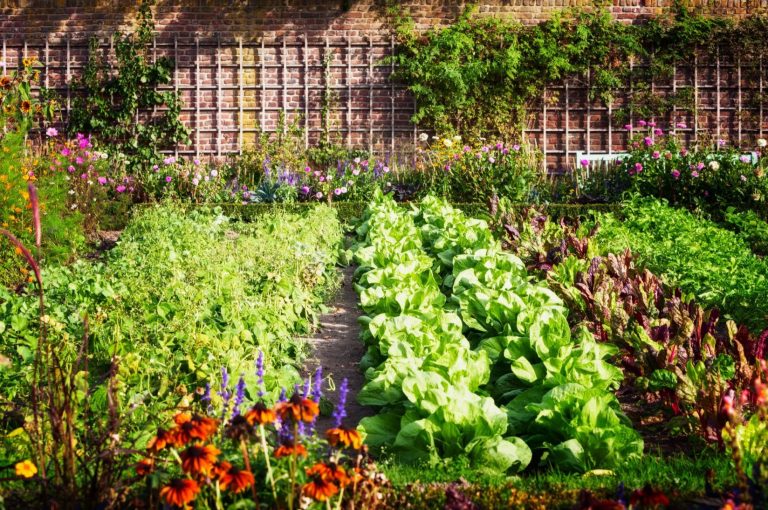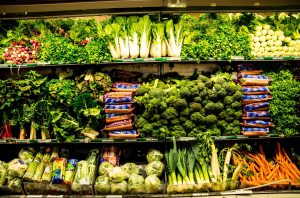Urban farming, or urban agriculture as it is sometimes called, is not a new concept, but it has certainly seen a resurgence recently. Urban farming seems to go through a renewal any time there is social or economic insecurity, as if we instinctively go back to our roots, so to speak, to get back in touch with the basics of life in order to ensure our survival.
The Victory Gardens grown by urban dwellers in Canada and the States to prevent food shortages during the world wars are prime examples of urban farming during uncertain times. Urban farming activity then subsided during the relatively stable couple of decades that followed the wars, only to surge again during the 70s as a response to food security issues in poorer neighbourhoods in the States. Nonprofits with this goal have sprung up in Canada as well. For example, Grow Calgary is a nonprofit that was formed in 2013 to grow fresh produce for social agencies in Calgary with food access programs.
Today, the popularity of urban farming in North America is exploding for a number of reasons related to security and uncertainty as well as a recognition that urban farming has social and environmental benefits as well. While the term “urban farming” can cover a gamut of food-producing activities in the city, from home gardens to community gardens to commercial gardens, in this article we are referring mainly to urban gardens/farms that produce food to sell within their community. These farms could be situated on city plots nestled between buildings, on rooftops or even vertical gardens that climb walls, but whether horizontal or vertical the advantages of incorporating urban farming into our food system are many.
How Does Urban Farming Improve Food Security?
As we saw during the pandemic, our supply chain is actually quite fragile. When our government shut down the economy and imposed various other restrictions, the supply chain was severely hampered. In Canada, we are quite dependent on imported food. We import about 30%, with a large portion of it coming from the United States.
While urban farming can’t fix a broken supply chain, it can introduce some measure of resilience into the system. In Canada, over 80% of us live in cities, almost completely dependent on people who live elsewhere to feed us. And yet, some studies show that if a city dedicated only about 10% of its landmass to urban farming, it could provide all the fresh vegetables that the city’s inhabitants need.
Because food grown in and for its surrounding community is better aligned with the needs of that community, less food is wasted as well. According to the United Nations, about 14% of all food produced is lost before it should have reached the store’s shelves. A further 17% is wasted after once bought. That’s a lot of food.
How does Urban Farming Help the Environment?
Obviously, if food doesn’t need to travel long distances on trucks, pollutants from transportation are reduced. About 30% of Canada’s food is imported according to a 2012 study, which translates to about 3.3 million metric tonnes of CO2 annually.
But as well, urban farms can add to green diversity within city limits, and natural ecosystems that provide oases of green within a city’s expanse of grey concrete, can have a dramatic impact on the health and well-being of all life in the city, including our own. We are, after all, an extension of our environment, and we depend on diverse, natural ecosystems for our health.
More specifically, urban farms can cool a city by moving water from the ground into the atmosphere. Healthy soil is a major driver of the earth’s water and carbon cycles. It will absorb rainfall, preventing the overloading of sewer systems and it also acts as the lungs of the earth, absorbing carbon and making it available to plants for growth. Urban farms that are organic and attentive to soil health can greatly contribute to the health of the air, even positively influencing weather and rain patterns.
Healthy green areas provide wonderful inviting habitats for pollinators such as birds, bats, bees, and butterflies, exponentially stimulating diversity and overall health.
How Can Urban Farming Help the Community?
Beyond adding healthy green space, urban Farms can become a nucleus for their local community. Many offer internships and volunteer opportunities, and it is well-known that working in a garden is a great stress-relieving activity. These farms care about their community and can even play a critical role in times of food crisis.
The community urban farm provides a very obvious way to get to know who is growing your food, and how they are growing it. This has multiple benefits.
- It allows you to have fresh, healthy food for yourself and family.
- It allows you to easily know the values and methods of the farm, if they use pesticides, if they respect the soil and so on.
- It fosters the farm to table connection, which is especially important for children so they develop an appreciation for food and all the work that goes into growing it.
- It re-establishes a connection with the earth and the cycles of nature since every food has its season.
- It can reinforce local traditions and foods, imparting a sense of place to the community and bringing people closer together as a result.
Food grown in your community is also good for the local economy. It directly supports your community’s economic health by employing local workers and by cutting out the middle-man.
Urban Farming vs Sustainable Farming
Let’s Pasta is completely committed to sustainable agriculture, and urban farming upholds many of the same tenants as sustainable agriculture. Both look at the production of food as being part of an ecosystem that doesn’t stop with the farm, but spins out to the greater natural world and the human community, positively impacting health as well as the social and economic well-being of all.
Urban farming promotes harmony and community and that’s what Let’s Pasta is about too. We think food, like our pasta, that is grown and produced in harmony with nature and community even tastes better! Let’s Pasta is local, sourcing all our raw ingredients from farms that use sustainable farming methods.





